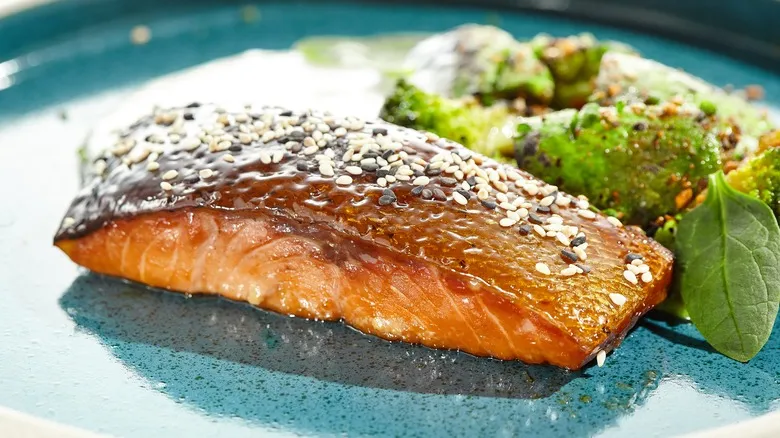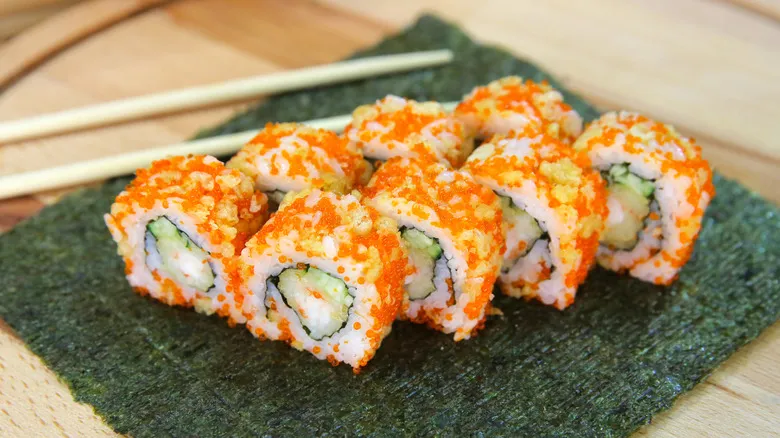Keep the skin on

Keeping the skin on salmon can simplify the cooking process, as it helps maintain the integrity of the fillet, reducing the chances of it breaking apart while cooking and serving. If you need to remove it afterward, it easily peels off. Moreover, the skin serves as a natural shield during cooking, safeguarding the tender flesh of the salmon from direct heat. If your pan or grill is extremely hot, let the skin endure the heat. Cooking salmon with the skin side down helps prevent the flesh from overcooking, ensuring it remains moist and tender.
Let’s not overlook the flavor and texture aspects. Who doesn’t enjoy crispy salmon skin? The skin is rich in natural oils that enhance the fish's flavor as it cooks. When properly crisped, it offers a delightful textural contrast to the soft flesh.
When shopping, be sure to ask your fishmonger to scale the skin for a clean and smooth finish. Most fillets will already have this done. Removing the scales eliminates any unpleasant textures, leaving you with beautiful, shiny skin that’s ideal for cooking. You should only request the fishmonger to remove the skin if you’re making sushi or poaching the fish.
The health benefits of salmon skin

Taste and texture? Check. And it’s nutritious too? Absolutely! As noted by Healthline, salmon skin boasts the highest levels of omega-3 fatty acids found in the fish. It’s also an excellent source of protein, vitamins B and D, and essential minerals like niacin and phosphorus. However, these health advantages are only present in fish sourced from clean, unpolluted waters. Farmed salmon, especially from the Atlantic, tends to accumulate the most toxins, so it’s best to steer clear of the skin from those. Opting for wild-caught Pacific salmon is your safest choice due to its cleaner habitat. Investing a little extra in wild-caught salmon is always worthwhile.
Incorporating the skin into your cooking not only enhances the flavor and texture but also boosts the nutritional value of the salmon. You can even toss crispy leftover salmon skin into your salads for a delightful crunch and an umami kick. So, the next time you’re shopping, reconsider choosing skinless fillets—you might be missing out on the best part of the fish!
Recommended

The Simple Fix For Overwhipped Cream

The Rinsing Hack To Sort Out The Sweetest Blueberries In The Pack

Make An Unforgettable Tuna Melt With An Easy Bread Swap

What To Do If You Find Roe While Cleaning Shrimp
Next up

